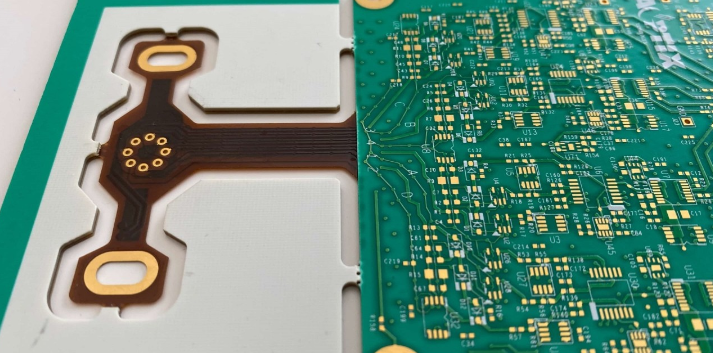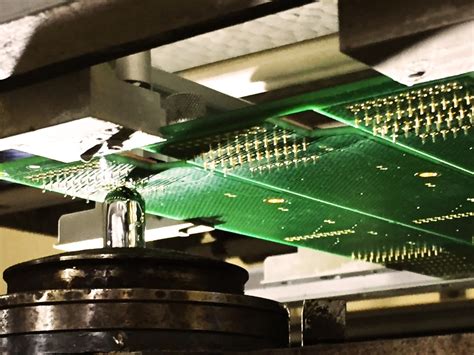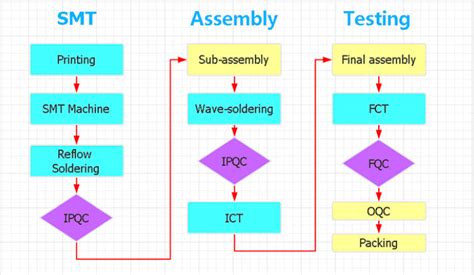Mastering Bare Board Fabrication: Techniques for Success
Key Takeaways
Achieving success in bare board fabrication hinges on several key elements that you must integrate into your workflow. Understanding the fundamentals of pcb manufacturing is imperative; this knowledge lays the groundwork for efficient processes and effective decision-making. As you explore various pcb manufacturing companies, you’ll discover that each offers distinct techniques and technologies that can influence pcb manufacturing cost. It’s crucial to evaluate these offerings based on how they align with your specific project needs and the complexity of multilayer designs you may undertake. In addition to this, mastering techniques related to via formation and proper metallization can significantly enhance the reliability of your circuits. This not only improves conductivity in bare boards but also increases overall performance in your pcb manufacturing business. Keep in mind the common challenges faced in this field, such as material selection and fabrication tolerances—addressing these early can save time and resources later on. Ultimately, a focus on quality assurance practices will ensure that the final product meets both industry standards and client expectations, setting your work apart in a competitive landscape.
Mastering the Basics of Bare Board Fabrication
In the realm of pcb manufacturing, understanding the foundational elements of bare board fabrication is vital for achieving high-quality results. The process begins with selecting suitable materials that not only meet the design specifications but also align with the cost considerations of your pcb manufacturing business. You will encounter various stages such as drilling, layering, and etching, all of which require precision and attention to detail. Collaborating with reputable pcb manufacturing companies will significantly enhance your ability to navigate these complexities effectively.
One must pay particular attention to the pcb manufacturing cost associated with different materials and processes, as these can vary greatly. For example, opting for advanced multilayer designs could increase manufacturing costs but can lead to improved performance in your final product. By mastering these foundational skills and understanding how each component fits into the overall process, you will be better equipped to tackle challenges head-on and ensure a smoother production flow in bare board fabrication projects. Your commitment to learning and applying these essential techniques will ultimately set you apart in a highly competitive market.
Techniques for Multilayer Fabrication Success
When it comes to pcb manufacturing processes, achieving success in multilayer fabrication is pivotal. You need to fully understand the integration of each layer within the circuit board. This ensures not only a compact design but also enhanced functionality. One critical aspect is the via formation, which connects the different layers and facilitates electrical pathways. The precision of your via placements directly affects the performance of your board, so consider using tools that specialize in high-quality pcb manufacturing to ensure accuracy and reliability.
Additionally, understanding the influence of various PCB materials on your manufacturing cost can help you make informed decisions about your pcb manufacturing business. Opt for materials that strike a balance between cost and performance, as this can significantly enhance both the durability and functionality of your final product.
Don’t forget about metallization techniques, as they are crucial for enhancing conductivity within your bare board fabrication process. Selecting effective methods can reduce resistance and ensure smoother operation across multiple layers.
“Success in multilayer fabrication often hinges on meticulous planning and expert knowledge of materials,” an industry expert once noted.
To elevate your expertise further, consider engaging with reputable pcb manufacturing companies that offer educational resources or workshops on multilayer processes. By continually improving your skills and understanding industry best practices, you stand a better chance of thriving in an ever-evolving market landscape.
For additional resources or services related to bare board fabrication, visit Andwin PCB.
Understanding Via Formation: A Key to Effective PCB Design
When diving into bare board fabrication, one of the critical aspects to focus on is via formation. Vias are small plated holes that connect different layers of a printed circuit board (PCB), allowing for effective signal and power distribution throughout the board. Understanding how to design and implement vias effectively can significantly enhance both the functionality and performance of your PCB design.
In pcb manufacturing, managing via formation correctly can influence the overall pcb manufacturing cost due to factors like precision in drilling and plating processes. For instance, if vias are misaligned or poorly placed, it could lead to increased rework or damage, straining your budget. Additionally, various types of vias exist—blind, buried, and through vias—all serving distinct purposes in multilayer boards.
Here’s a quick overview that emphasizes the role different via types play in your designs:
| Via Type | Description | Applications |
|---|---|---|
| Through Via | Passes completely through the board from top to bottom | Common in standard PCB designs |
| Blind Via | Connects an outer layer to an inner layer without going through the entire board | Used in complex multilayer PCBs |
| Buried Via | Connects inner layers only, not visible from outside | Ideal for high-density applications |
By mastering via formation techniques, you can optimize your designs for both performance and manufacturability. Collaborating with experienced pcb manufacturing companies will also ensure that you gain insights into best practices for via implementation. This expertise is crucial because the complexities involved in multilayer fabrication can invariably affect your overall design efficacy and production timeline.
Thus, understanding via formation goes beyond just drilling holes; it encompasses strategic decisions that impact the entire pcb manufacturing business. As you sharpen your skills in this area, you’ll find that not only does it enhance your knowledge but also sets you apart in achieving successful outcomes in bare board fabrication.
Metallization Methods: Enhancing Conductivity in Bare Boards
Effective metallization is crucial in the realm of bare board fabrication, as it directly influences the performance and reliability of printed circuit boards (PCBs). By utilizing metallization methods, you can significantly enhance the conductivity of your bare boards, ensuring they meet the demands of modern electronic applications. Different techniques, such as electroless plating and electrolytic plating, play a vital role in this process. When selecting a method, consider factors like cost-efficiency and quality; these can impact your overall pcb manufacturing cost. It’s important to collaborate with reputable pcb manufacturing companies that specialize in these techniques to achieve optimal results. This partnership can not only ensure high-quality metallization but also enhance your overall knowledge in the pcb manufacturing business. As you delve deeper into metallization methods, exploring their impact on multilayer applications will further empower you to create reliable and effective PCBs that meet industry standards. Whether you’re interested in expanding your capabilities or simply refining existing processes, understanding these methods will contribute to your success in the competitive landscape of bare board fabrication.
Common Challenges in Bare Board Fabrication and How to Overcome Them
In the realm of bare board fabrication, several challenges can arise that may hinder the progress and efficiency of your PCB manufacturing processes. One common issue is ensuring the quality of multilayer boards, as misalignment during layers can lead to significant waste and increased PCB manufacturing costs. To counter this, meticulous attention to detail in alignment during each stage of assembly is crucial. Additionally, the process of via formation can present difficulties; incorrect via placement or inadequate plating can cause functional failures in designed circuits. Developing a robust design review process before the actual manufacturing begins can help avoid these pitfalls.
Furthermore, consistent metallization is vital for enhancing conductivity, yet variations in materials or techniques might lead to inconsistent electrical performance. Choosing reliable suppliers from reputable PCB manufacturing companies and ensuring thorough testing protocols before full-scale production can mitigate these risks. You should also actively monitor your production methods and look for continuous improvement opportunities within your PCB manufacturing business. By embracing best practices and staying informed about evolving technologies, you will not only navigate these challenges more effectively but also position your business for long-term success in the competitive landscape of bare board fabrication.
Quality Assurance in PCB Assembly: Best Practices
Ensuring high standards in PCB assembly is pivotal for the success of your PCB manufacturing endeavors. By establishing robust quality assurance practices, you can significantly reduce errors and enhance the reliability of your printed circuit boards. Begin by implementing thorough testing procedures at every stage of your PCB manufacturing business. This includes performing visual inspections, electrical tests, and functional tests to identify any potential issues early on. Additionally, consider partnering with reputable PCB manufacturing companies that prioritize quality control throughout their processes. Such collaboration can help you navigate the complexities associated with PCB manufacturing cost, as effective quality assurance measures often lead to reduced scrap rates and rework costs. Regular training for your team on best practices in quality assurance not only boosts their skills but also contributes to a culture of excellence within your organization. By focusing on these best practices, you can achieve outstanding results in the assembly phase of your projects and ensure that your bare boards meet the highest standards of quality and performance.
Advanced Technologies in Bare Board Fabrication
In the evolving landscape of bare board fabrication, advanced technologies play a crucial role in enhancing efficiency and precision in PCB manufacturing. The advent of automation and innovative materials has revolutionized how PCB manufacturing companies approach the production process. Technologies such as laser drilling and advanced metallization techniques facilitate high-density interconnections, significantly improving the performance of the final product. Reliability is further increased through the integration of computer-aided design (CAD) software, which enables meticulous planning and simulation of designs before actual production begins. Understanding these technological trends is essential for anyone involved in the PCB manufacturing business, as they can lead to reduced production time and lower PCB manufacturing costs while ensuring high-quality outcomes. By leveraging these advancements, you can better navigate challenges in bare board fabrication and elevate your skills in printed circuit board assembly. Embracing these technologies not only enhances your understanding but also positions your projects for greater success in a competitive market.
Case Studies: Successful Bare Board Projects and Lessons Learned
In exploring the realm of bare board fabrication, it’s invaluable to draw insights from real-world applications and the experiences of various industry leaders. Analyzing successful PCB manufacturing projects helps to illuminate effective strategies while identifying common pitfalls that can be easily avoided. For instance, one notable case involved a leading company that partnered with innovative PCB manufacturing companies to overcome challenges related to multilayer fabrication. By implementing new techniques in via formation, they achieved remarkable improvements in design efficiency and overall product reliability. Additionally, lessons learned from supply chain management revealed that understanding the intricacies of pcb manufacturing cost is pivotal for any pcb manufacturing business aiming for sustainability and profitability. Moreover, by meticulously documenting the processes and outcomes of these endeavors, professionals gain a comprehensive perspective on advanced techniques that enhance not just their own operations but also contribute to a greater understanding within the industry. From this case study, it is clear that harnessing collaborative efforts while focusing on quality assurance practices can significantly influence the success rates in bare board fabrication.
Conclusion
In the realm of pcb manufacturing, understanding the nuances of bare board fabrication is vital for your success. You have explored various techniques that are critical in achieving a seamless manufacturing process, which directly impacts your overall pcb manufacturing cost. By familiarizing yourself with practices from leading pcb manufacturing companies, such as multilayer fabrication and effective via formation, you’ll be better equipped to tackle the challenges that arise in your pcb manufacturing business. Moreover, knowing how to implement quality assurance measures ensures that every board produced meets stringent standards for performance and reliability. As this knowledge permeates your work, you can confidently oversee projects that not only meet client expectations but also position your business favorably within a competitive landscape. Ultimately, becoming adept in these essential areas is not just about mastering techniques; it’s about cultivating a holistic approach to bare board fabrication that drives innovation and excellence in every aspect of production.
FAQs
What is bare board fabrication?
Bare board fabrication refers to the process of manufacturing printed circuit boards (PCBs) without any components. This is a crucial step in the pcb manufacturing process, where the structural and conductive layers are created to support electrical circuits.
What techniques are used in bare board fabrication?
In pcb manufacturing, techniques such as multilayer fabrication, via formation, and metallization are essential. These methods enhance conductivity and overall efficiency while ensuring high-quality production standards.
How do I choose a reliable pcb manufacturing company?
When selecting a pcb manufacturing company, consider factors like the company’s reputation, their experience in multilayer boards, and their ability to meet your specific needs at competitive pcb manufacturing costs.
What are common challenges in bare board fabrication?
Common challenges include achieving precision in via formation, maintaining quality throughout the metallization process, and managing production timelines. Understanding these aspects can help you navigate the complexities of the pcb manufacturing business successfully.
How can I ensure quality assurance in my PCB assembly?
Implement best practices for quality assurance by conducting thorough inspections at each stage of production. This includes verifying dimensions, conducting electrical tests, and adhering to stringent industry standards to minimize defects.
For more information on effective PCB solutions, please click here.






